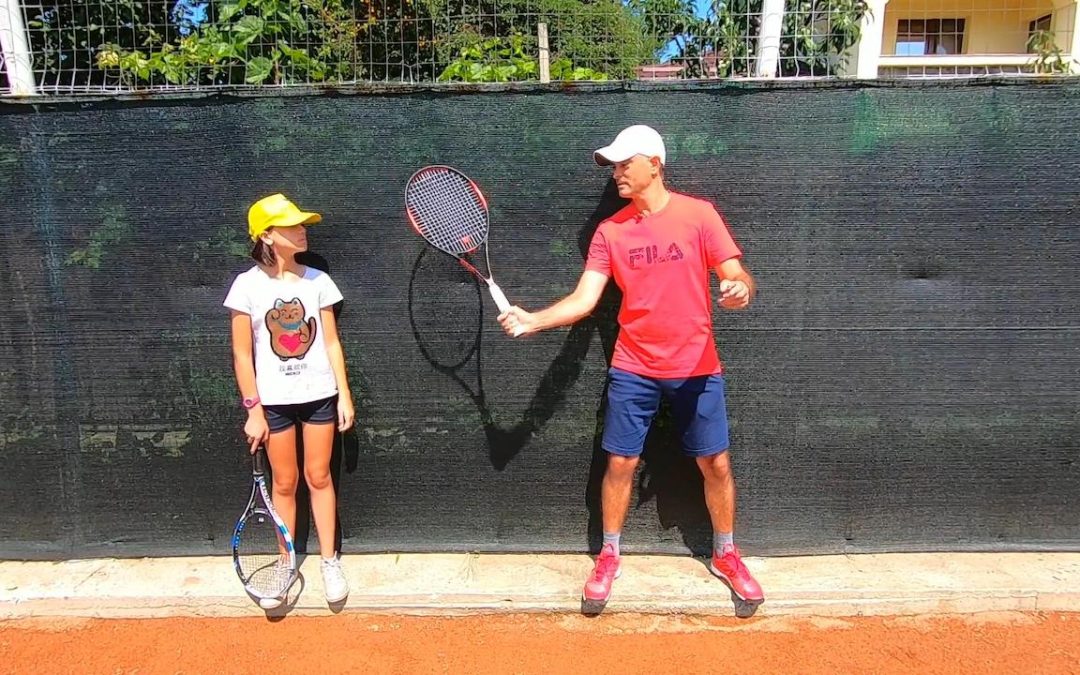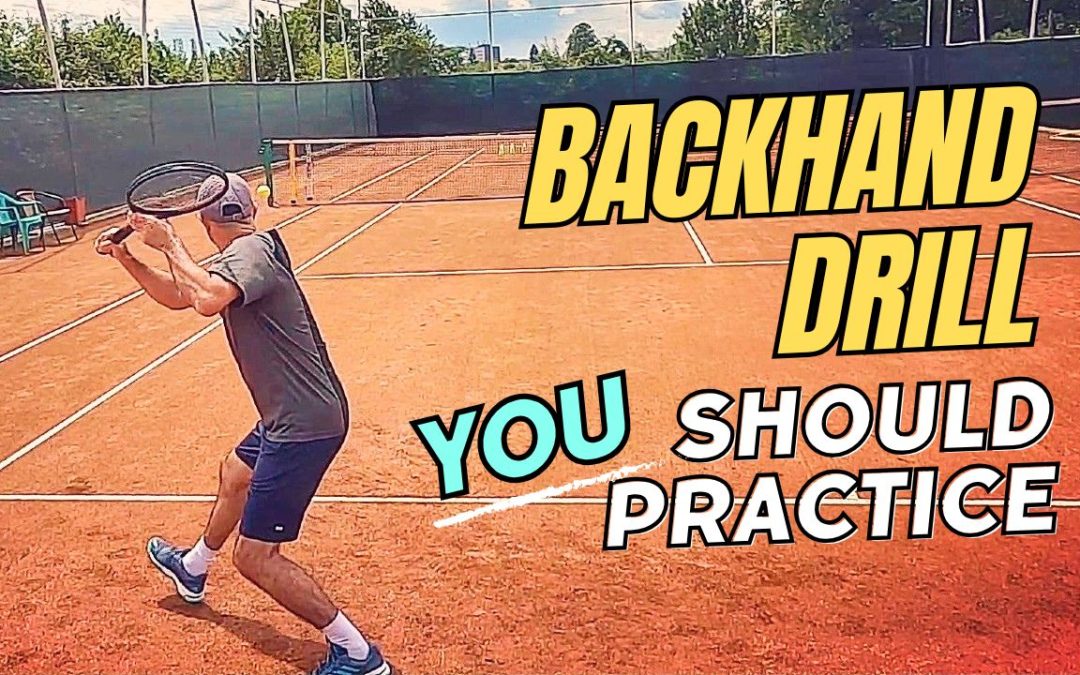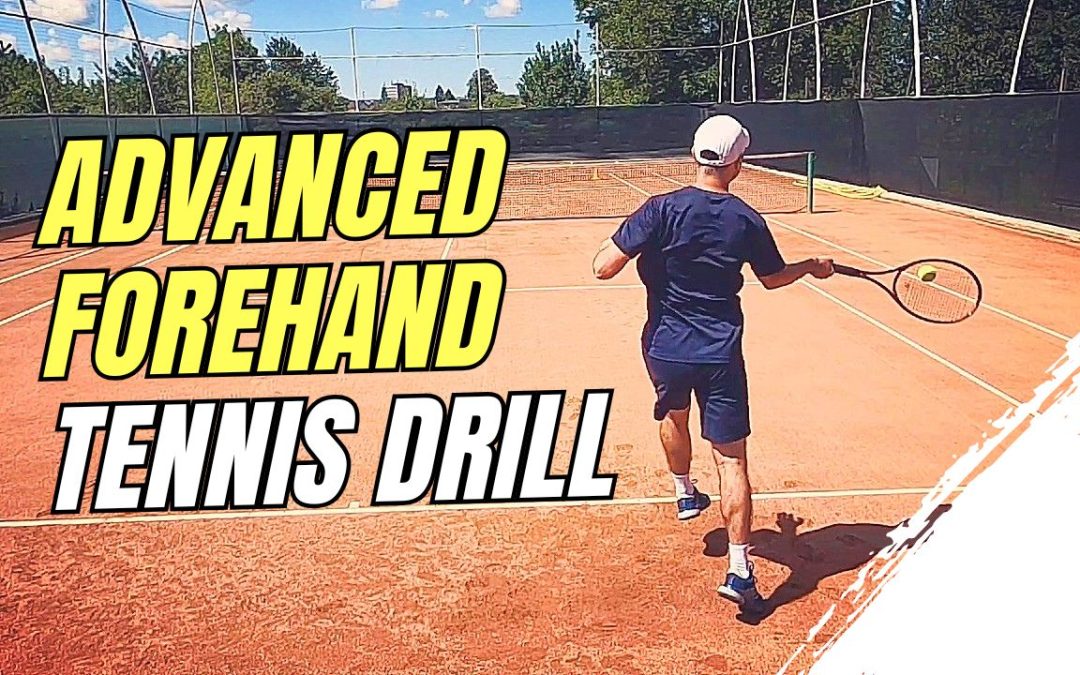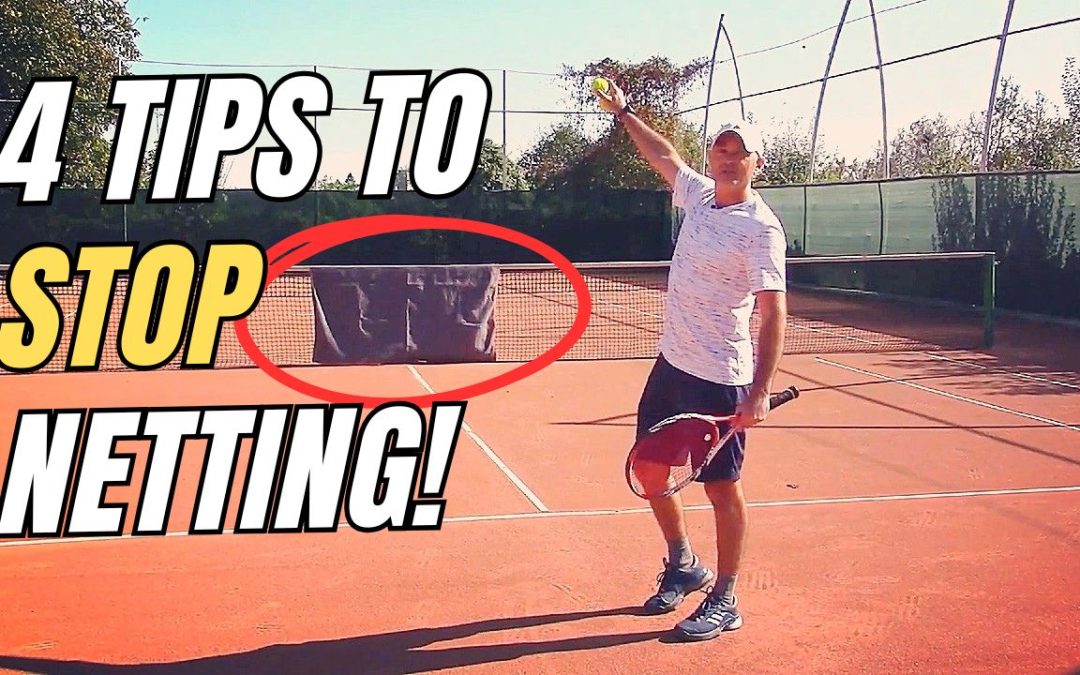
My Step-by-Step Approach to Teaching Tennis VOLLEY to Beginners
A Comprehensive Guide for Teaching the Volley to Beginner Tennis Players
Table of Contents
- Intro and greeting the student
- Hand-eye coordination drills
- Racket and ball control with continental grip
- Why you should use softer balls when teaching the volley
- Cone exercise to learn hand-eye coordination
- Tennis volley introduction: what it is, where we hit it, and why
- Volley grip: how to, and why hammer/continental grip is the best
- Coach demonstrates the forehand and backhand volley
- Tennis drill: ball “catching” technique
- Hammer grip vs forehand grip
- Hammer grip / ball “catching” drills, and technique tips
- Wrist control tips: 90 degree angle
- Ball “catching” with full racket and hammer grip
- Introduction to backhand volley: grip, technique
- Volley technique error: elevating the elbow (how to fix)
- Fence drill to avoid the backswing
- Chair drill: avoid pushing the ball down / learn to pop the ball up by opening the racket
- Basic volley drill: one step forward / one step backward
- Basic volley drill: forehand and backhand “catching and pushing” the ball
- Lesson review
- Volley ready position: technique, split step
- Elbows position technique: why it is important that elbows are out in front
- Basic volley footwork, and overall technique (no balls)
- Ball feeding / volley technique practice (with balls)
- Backhand volley technical aspects: back elbow, basic footwork, follow-through, hands separation (tennis tips, drills)
- Backhand volley technique practice (with balls)
- Forehand and backhand volley technique practice (with balls)
- Review of the volley technical elements learned and practiced / difference between volley and other tennis strokes
- FAQ
Intro and greeting the student
Welcome to your tennis journey! Today, we’re diving into one of the most exciting shots in tennis—the volley. As a coach, it’s essential to create a welcoming environment for your student. In this lesson, we’ll explore the fundamentals of the volley, starting with hand-eye coordination and progressing through various drills and techniques.
Hand-eye coordination drills
Before we jump into volleys, we need to ensure our students have good hand-eye coordination. Start with simple drills: toss and catch a ball with your student. This exercise not only warms them up but also builds the necessary skills for volleying.
Encourage your student to smile and enjoy the process. As they toss and catch, remind them to shuffle from side to side, creating movement and rhythm. This drill lays the foundation for the upcoming volley techniques.
Racket and ball control with continental grip
Next, introduce the continental grip, often referred to as the “hammer grip.” This grip is crucial for effective volleying. Have your student hold the racket as if they’re hammering a nail, which will help them control the racket better.
To practice, have them bounce the ball on the strings of the racket, encouraging them to develop strength in their wrists and forearms. This exercise may be challenging initially, but it’s essential for their progression.
Why you should use softer balls when teaching the volley
Using softer, lighter balls is vital when teaching volleys, especially for beginners. These balls are easier to control and less intimidating, allowing your student to focus on technique without the fear of getting hit. They provide the opportunity to practice without overwhelming the student.
Cone exercise to learn hand-eye coordination
For the next drill, grab some cones. Have your student hold a cone facing them and toss balls for them to catch in the cone. This fun exercise enhances their hand-eye coordination and prepares them for the next steps in volleying.
Encourage them to catch the ball in the air rather than letting it bounce, as this mimics the volleying action they will soon learn.
Tennis volley introduction: what it is, where we hit it, and why
Now that we’ve warmed up, let’s define the volley. A volley is a shot played when you’re close to the net, and you hit the ball before it bounces. This shot is crucial for finishing points and controlling the game.
Explain to your student that volleys are typically hit inside the service line, emphasizing the importance of being proactive and stepping into the shot.
Volley grip: how to, and why hammer/continental grip is the best
Reiterate the importance of the hammer grip for volleys. This grip allows for quick reactions without the need to change grips between forehand and backhand volleys. It simplifies the process, making it easier for beginners to learn.
Coach demonstrates the forehand and backhand volley
As the coach, demonstrate both the forehand and backhand volleys clearly. Show your student how to catch the ball with minimal backswing and follow-through. Emphasize that the volley is more about placement rather than power.
Tennis drill: ball “catching” technique
Introduce the “catching” technique. Have your student practice catching the ball with their hand first, focusing on the timing and positioning. Once they feel comfortable, transition to using the racket. Remind them that the goal is to catch and push the ball, not swing at it.
Hammer grip vs forehand grip
Discuss the differences between the hammer grip and the forehand grip. Highlight that the hammer grip is more advantageous for volleying due to its versatility and simplicity. Reinforce the idea that using one grip for both forehand and backhand volleys will help them react faster.
Hammer grip / ball “catching” drills, and technique tips
Have your student practice the hammer grip while catching balls. Encourage them to maintain a firm wrist and a 90-degree angle between the forearm and the racket. This technique will help them develop strength and control.
Wrist control tips: 90 degree angle
Wrist control is crucial for effective volleying. Remind your student to keep their wrist locked and maintain that 90-degree angle between the forearm and racket. This position ensures better control and accuracy when hitting the ball.
Ball “catching” with full racket and hammer grip
As your student becomes more comfortable, have them practice catching balls with the full racket using the hammer grip. This exercise reinforces the concept of catching and pushing rather than swinging. Encourage them to focus on the ball’s placement over power.
Introduction to backhand volley: grip, technique
Now it’s time to introduce the backhand volley. Use the same hammer grip and emphasize that the technique is similar to the forehand volley. Demonstrate the backhand volley, focusing on catching the ball out in front and keeping the racket face slightly open.
Volley technique error: elevating the elbow (how to fix)
Common errors include elevating the elbow during the volley. Teach your student to keep their elbow down to maintain control. A great drill to correct this is holding a ball between their elbow and body to keep the elbow tucked in.
Fence drill to avoid the backswing
Use a fence to help your student understand the importance of not taking the racket back. Have them practice catching balls while standing close to the fence to ensure their racket stays in front of their body. This drill emphasizes the no-backswing principle of volleying.
Chair drill: avoid pushing the ball down / learn to pop the ball up by opening the racket
Introduce a chair drill where your student sits and practices volleying. This helps them focus on opening the racket face and popping the ball up rather than pushing it down. It’s a great way to reinforce the technique in a controlled manner.
Basic volley drill: one step forward / one step backward
In this drill, have your student practice stepping forward to meet the ball and then stepping back to regain position. This drill helps them understand the importance of footwork and positioning while volleying.
Basic volley drill: forehand and backhand “catching and pushing” the ball
Combine forehand and backhand volleys in a simple drill where your student catches and pushes the ball over the net. Reinforce the idea of using the hammer grip and maintaining the correct wrist angle throughout the drill.
Lesson review
After practicing, take a moment to review the key concepts covered in the lesson. Emphasize the importance of the hammer grip, wrist control, and the no-backswing technique. Encourage your student to practice these skills regularly for improvement.
Volley ready position: technique, split step
Introduce the ready position for volleying. Explain the importance of the split step to maintain balance and prepare for quick reactions. The ready position should have the racket in front and the elbows slightly out to allow for quick movement.
Elbows position technique: why it is important that elbows are out in front
Reiterate that having the elbows out in front helps prevent the racket from dropping too low, allowing for better control and power. Encourage your student to keep their elbows in the correct position during volleys.
Basic volley footwork, and overall technique (no balls)
Practice the footwork necessary for volleying without balls. This helps your student focus on movement and positioning. Emphasize the importance of stepping out to load weight and stepping in to hit the ball.
Ball feeding / volley technique practice (with balls)
Now it’s time for ball feeding. Feed balls to your student while they practice their volleys. Remind them to maintain the correct grip, angle, and footwork while catching and pushing the ball.
Backhand volley technical aspects: back elbow, basic footwork, follow-through, hands separation (tennis tips, drills)
Focus on the technical aspects of the backhand volley, including the back elbow positioning and footwork. Reinforce the idea of not following through and instead emphasizing catching and pushing the ball.
Backhand volley technique practice (with balls)
Allow your student to practice backhand volleys with balls. Remind them to focus on the key techniques discussed, including grip, footwork, and wrist control.
Forehand and backhand volley technique practice (with balls)
Continue practicing both forehand and backhand volleys with balls. Use positive reinforcement to encourage your student as they improve their technique and confidence on the court.
Review of the volley technical elements learned and practiced / difference between volley and other tennis strokes
Finally, wrap up the lesson by reviewing all the technical elements learned. Discuss the differences between volleys and other strokes, highlighting the unique aspects of volleying that make it an essential skill in tennis.

FAQ
- What is the best grip for volleying? The continental or hammer grip is best for volleying as it allows for quick reactions and simplifies the technique.
- Why should I use softer balls when teaching volleys? Softer balls are easier to control and less intimidating for beginners, helping them focus on technique rather than power.
- How can I improve my hand-eye coordination for tennis? Regular practice with tossing and catching drills can help enhance your hand-eye coordination, which is crucial for volleying.
- What is the most important aspect of volleying? The most important aspects are maintaining the correct grip, keeping the racket face slightly open, and focusing on catching and pushing the ball rather than swinging.













